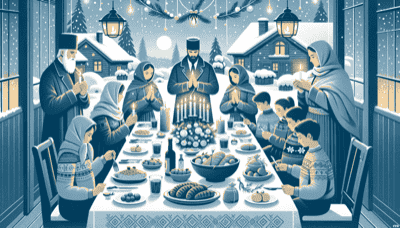We're here to help you keep count of the days to or since a date. Just click the button below and enter your chosen date to get started. Also choose the suggested days or search for a special day above #countingthedays

Christmas Day in Serbia is traditionally celebrated on January 7th due to the Serbian Orthodox Church's use of the Julian calendar, which runs 13 days behind the Gregorian calendar used in many other parts of the world. This day marks the birth of Jesus Christ and is one of the most important religious holidays for Serbian Orthodox Christians.
The festive period begins with Advent, a time of fasting and preparation for Christmas that lasts 40 days, leading up to Christmas Eve known as "Badnji dan" and Christmas Day known as "Božić."
On Christmas Eve, it is customary for families to bring a special oak log called a "Badnjak" into their homes, symbolizing the wood that Joseph gathered to keep Mary and Jesus warm. This log is ceremonially burned in the evening. A bundle of straw may be spread on the floor to symbolize the manger where Jesus was born.
On Christmas Day, families gather for a festive meal. The table is often set with an odd number of dishes as per tradition, which are meat-free because fasting continues until after receiving Holy Communion at church. A special round loaf called "česnica" containing a hidden coin is baked; whoever finds it will supposedly have good luck for the coming year.
Christmas in Serbia is also characterized by attending church services and receiving communion if one has observed the fast. The greeting on this day is "Hristos se rodi!" (Christ is born!), to which people respond with "Vaistinu se rodi!" (Indeed He is born!).
Gift-giving does happen but isn't as central as it might be in some Western countries. Instead, emphasis tends to be more on religious aspects and family reunions.
In some regions, children go caroling from house to house singing songs honoring Christ's birth; they receive fruits, nuts, and small gifts in return.
Overall, Christmas Day in Serbia remains deeply rooted in religious traditions and family gatherings focused on celebrating the nativity of Christ.